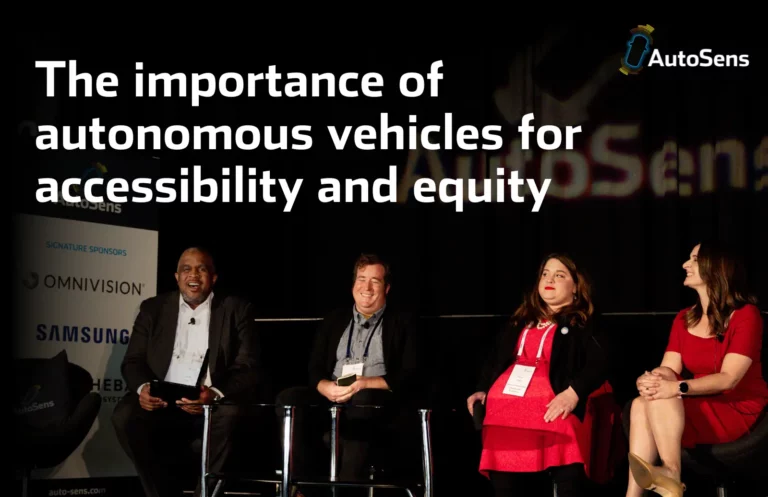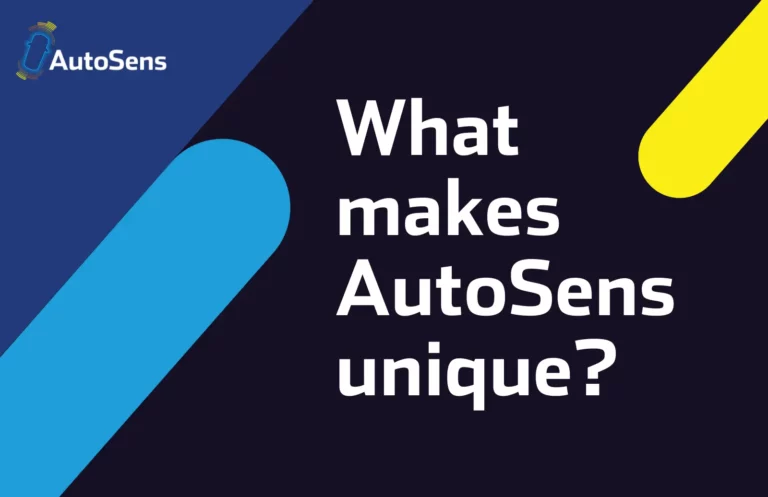1. Your presentation at AutoSens Detroit is called 'A new automotive image sensor' - how intriguing! Can you talk me through what you'll be presenting in this session?
We are very excited to introduce Hyperlux, a new automotive image sensor family. Hyperlux’s performance, speed, and advanced features support a smooth transition to L2+ autonomy. This session will talk in more detail on how this product family paves the way for safer driving in pursuit of Vision Zero with zero road fatalities.
2. Can you tell us a bit about Hyperlux?
onsemi has developed a new Hyperlux 2.1 µm super-exposure pixel image sensor family with a unique set of features that caters to both sensing and viewing camera applications. Hyperlux sensors range from 3 Megapixel (MP), 8 MP and higher resolution, providing operation to capture up to 150 dB HDR images with LED flicker mitigation that is good for surround view, e-mirror as well as ADAS and autonomous vehicle (AV) sensing applications. In all cases, Hyperlux sensors keep all signal-to-noise ratio (SNR) transitions at 30 dB and above including high temperatures (up to +125°C junction). At the same time, Hyperlux sensors deliver 150 dB HDR, with more than 120 dB flicker free range, well exceeding other offerings on the market.
150 dB HDR capture significantly simplifies exposure control from the host. This results in a “what you see is what you get” from the image sensor. Reduced blind system periods and dropped frames lead to increased safety and not to mention a faster time to market. There’s no need for SoC or ISP integrators to re-tune frame by frame exposure/gain controls – that’s what we mean by “set it and forget it” feature. Another benefit of this wide dynamic range is the increased ability to capture direct sun and traffic lights in sunny day conditions with fidelity. The Hyperlux product family has the ability to capture these very demanding scenarios reliably and deliver true colors with sharp details. This superior low light performance is driven by the pixel technology advancements capturing more photons and lower dark noise. The same advantage is experienced on cool night when junction temperatures may drop to +40°C range.
In summary, Hyperlux product family offers a platform ideal for sensing and viewing application with it’s higher and more stable flicker free HDR feature across all temperatures. The superior low light performance reduces the chances of false detection increasing algorithm robustness. The Hyperlux automotive image sensor family is designed to meet the stringent safety requirements of an ASIL D system providing the highest level of safety.
3. Why is HDR so critical for Automotive applications?
The most exciting part of the future for high dynamic range (HDR) sensors is the role they will play in the path towards “vision zero” – the strategy to eliminate all traffic fatalities and severe injuries, while increasing safe, healthy, equitable mobility for all. As we move forward towards higher levels of autonomy, advanced driver assistance systems (ADAS) are becoming more sophisticated, and these require reliable components to help ensure the safety of both vehicle occupants and road users. In current automobiles, a single pair of human eyes is expected to monitor the road and the surrounding environment – in autonomous vehicles human eyes will be replaced by many more cameras “eyes.” It will be critical for the optical and imaging sensors to perform even better than the human eye.
It may be some time before fully autonomous vehicles take over the roads. In the meantime, image sensors have a major part to play in ensuring the safety of drivers, pedestrians, and cyclists, especially in challenging, low-light conditions. Safety standards, such as Euro NCAP, have introduced regulations to mitigate the severity of rear-end collisions and to expand road coverage for vulnerable road users in challenging lighting conditions. onsemi’s unique image sensor technology assists automotive OEMs in complying with these regulations.
The performance of ADAS systems such as park assist, pedestrian detection, lane departure warning, or traffic sign recognition can be adversely affected by wide variations in ambient lighting conditions (caused, for example, by bright sunlight incident at a low angle of elevation or reflecting from a wet road surface), and other light sources such as the headlights of oncoming vehicles. Another challenging, and potentially dangerous, situation can arise if the headlight of one’s own vehicle reflect from a road sign making if difficult (and potentially impossible) for an image sensor to capture the speed limit or other warning information on the sign. These conditions also present difficulties for authorities monitoring and controlling the flow of road traffic in real time – vehicle lights shining directly on a monitoring camera make scene detection very difficult. Similarly, cameras monitoring the entrances and exits of tunnels must contend with the contrast between the bright light of the sun outside the tunnel and the artificial light illuminating the dark interior. If the camera’s field of view includes both environments, parts of the image can be rendered useless because it becomes completely saturated by the bright light or is too dark for any useful information to be discerned.
At onsemi, we are excited by the fact that our image sensors are designed to operate in even the most challenging conditions, making roads much safer for all users.
4. What are the specific sensor features that address high temperature operating environments?
Signal-to-noise ratio (SNR) is an important parameter for all image sensors as this is related to the ability of the system to detect objects within images generated by the sensor. At high temperatures, a typical 3 µm split-diode sensor experiences a drop of SNR to around 20 dB. Noise is clearly visible at this level, and object detection is more difficult. A comparable onsemi sensor delivers SNR levels of more than 30 dB. At this level, noise is significantly less, and object detection is far easier, resulting in a much more visually pleasing image for viewing applications. Temperature is always a challenge for image sensors and can significantly degrade image quality and performance. This is particularly true in automotive applications where sensors run at elevated junction temperatures of 80°C or higher for more than 80% of their lifetime—due to being placed in direct sunlight and designed in small enclosed spaces with other electronics that generate heat during operation. Even at junction temperatures of 125°C, onsemi image sensors with 2.1 µm pixel size can achieve more than 25 dB SNR performance in mid-to-high light conditions, ensuring that accurate object detection is possible in all operating conditions.
5. How do you compare Hyperlux technology to other competing solutions?
Split-pixel sensor technology (images are captured using both large and small sub-pixels) is seen in the market to capture images with HDR in automotive applications because it captures multiple images simultaneously, rather than sequentially. To produce an image with HDR, raw images are captured using both large and small sub-pixels, and these are then combined in the HDR output. To extend the dynamic range, a large sub-pixel is used for darker parts of image and a small sub-pixel for mid to high light parts of image captures. We see issues with this approach and made a conscious decision not to use solid pixels in place of split pixel technology as used by our competitors.
To elaborate on a few, the relative size of the photosensitive area of the pixel (fill factor) plays a very significant role in the image produced. When viewing an identical scene, the output image will be significantly different, depending on whether large or small sub-pixels are used. A disadvantage of this approach is that less pixel area is available for image capture in low-light conditions. Additionally, due to complexity of the split-pixel it requires more implants, gates, and deep trenches that generate higher dark noise thus further reducing low light performance, especially at higher temperatures. In addition, significant color artifacts and shifts can occur because of the incident angle of light rays from the lens interacting differently with the two-sized pixels in the array. That requires a special embedded image signal processing in raw split-pixel sensors to correct and filter out unwanted effects and improve image quality. As a result of these corrections and filtering a significant image sharpness degradation may occur. Due to the fact that small sub-pixel generates about 10 times smaller signal in comparison to best super-exposure pixels the total SNR in mid and high light conditions is 7 to 10 dB less. Furthermore, the performance of image sensors based on this technique can significantly degrade at ambient temperatures exceeding 100°C.
In addition to the pixel technology advantages, Hyperlux boats the lowest power and form factor available on the market.
6. We're proud to announce that you'll be joining us at AutoSens Detroit this May as our Lead Sponsor. What can we expect to see at your stand?
We are excited to launch our state-of- the-art product family – Hyperlux, comprised of multiple resolution offerings. You will see the technology in action on the show floor! You will also get a peek at our ecosystem partners who have been relentlessly working on pairing our Hyperlux family of products in their platform.
7. What do you love most about being part of the AutoSens Community?
Autosens is an excellent opportunity for people within the Automotive community to be under one roof for three days straight exchanging ideas and getting exposed to the latest advancements in sensing. It provides a unique blend of interaction between OEMs, tier 1 and tier 2 suppliers. The content of presentations, the quality of discussions and the inventive ideas makes it a must attend for all in the Automotive industry.
View the full AutoSens Detroit agenda here: https://auto-sens.com/events/detroit/agenda/
To hear more from Radhika, and other Automotive Exterior experts, join us in Detroit this May! Grab your pass here: https://auto-sens.com/events/detroit/pass/







